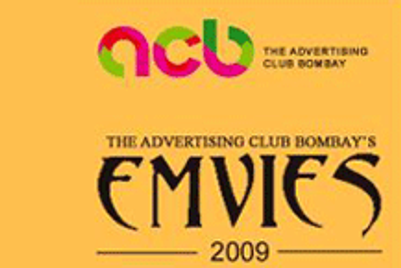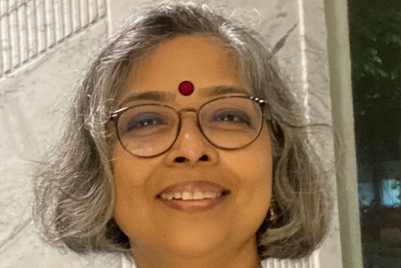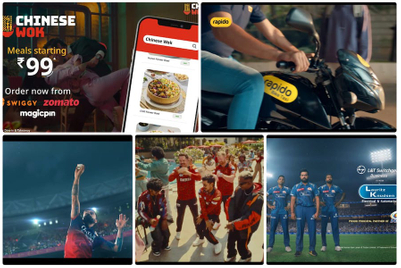
The Emvies, organized by the Ad Club of Bombay, has begun its first round of judging. The annual marketing excellence awards have seen a rise in the total number of entries submitted from 382 last year to 452 in 2008.
Apurva Purohit, chairperson of the Emvies committee (pictured) says there have been visible changes in the quality and quantity of work seen so far. She added, "The width of the agencies that have participated this year has certainly gone up and we have had many more agencies from different parts of the country taking part. People have been scaling up in terms of the way they communicate the entries. One of the drawbacks that everybody claims, even at global forums like Cannes, is that the way we write and present the entries is not good enough, even if the work may be great. As far as the written case studies go, over the last two years, this has certainly become better, clearer, more focused. On our part, we also try to help, in the way that we structure things."
She further added, "This year, for instance, there are two things that we added in the judging criteria. One, we have asked judges to evaluate execution and scale of execution. Ultimately media is not only about the thought, it's also about how well you execute the idea. The second is accountability of that particular entry or how did it deliver against the set objectives and can we see the quantifiable result? The Emvies are not only about innovation or brilliance of thought, they are also about the efficacy of the entry."
In its seventh year now, Emvies 2008 are being awarded in six categories, namely: Best Media Strategy, Best Media Innovation (across TV, print, radio, OOH, cinema, digital etc); Best Media Research, Best Integrated Campaign, Media Agency of the year and the Grand Emvie. The judging process takes place in two stages. The first stage will have submitted entries being judged by a panel comprising a minimum of a 6 member jury. At this stage, the size of the panel is large and spread across various functions. Those in the jury include Ajit Varghese of Maxus, Anamika Mehta of Lodestar Universal, C Mallikarjundas of Madison Media, Jasmin Sohrabji and Harish Shriyan of OMD, Shripad Kulkarni of Allied Media Network, VS Mani of Lintas Media Group among a host of other senior media professionals.
In the second stage, entries shortlisted in each category in the first phase go through. Presentations are made and the results are declared based upon the case study presented.
Mudra Max's Chandradeep Mitra who was judging the radio and cinema category said, "These two mediums have some catching up to do in terms of quality of thinking and presentation. In that sense, I think radio was better. Though the number of entries in cinema were larger, a lot of the work in this category were about product integration and co-promotion, today that has become plain vanilla. So out of 54, at least 30 would have fallen into that category. So it was very easy to eliminate the not so good work. The ones that did well in cinema were those that went beyond product integration. What they do is they get a brand into a film and then they promote it by taking it outside the cinema, using a 360 degree integration approach, and the fit of the brand with the TG and the film content is very good. There were also a few that used the cinema theatre very well as an experiential zone, which was very good. In radio, a lot of effort has gone into creating branded programming which had a good fit. A lot of effort went in, to involve RJs into creating something which creates a brand experience. I am wondering what the next big one on radio would be."
"The number of entries has gone up this year as they have also included film promotion as a category. I felt though the quality of work seems to have gone down as more and more work was skewed towards integration with content. In the estimated 70 entries in the TV category, 40 to 50 % were from the FMCG sector. There was not much from telecom or automotive as a category, given the amount of money that these categories append on TV, which I found baffling," said Arun Tyagi of Reliance Capital, who was judging the TV innovation category.
Maxus' Ajit Verghese felt that there were clear extremes in this year's entries. He said, "There is a conceptual level change that you try to bring about and then you look at the implementation. Here a lot of the focus is only on what all you did, it looked like more of a 360 degree integrated campaign versus giving a differentiated solution to the same old problem. But the good work really stood out in terms of quality of thinking."
Madison's C Mallikarjundas however felt that it was important to maintain the sanctity of the category being evaluated. He said, "There needs to be more sanctity to the buckets that have been created. The fact that there are different buckets that have been created for strategy, integrated, innovations, research etc means that you want people to showcase their work separately. Somewhere there is a flux and the same entries are being replicated across categories. That leads to a further problem as that makes most entries look the same."
The next round of judging will take place on July 21st and 22nd.


.jpg&h=334&w=500&q=100&v=20250320&c=1)
.jpg&h=334&w=500&q=100&v=20250320&c=1)


.jpg&h=334&w=500&q=100&v=20250320&c=1)



.jpg&h=334&w=500&q=100&v=20250320&c=1)


.png&h=268&w=401&q=100&v=20250320&c=1)

.jpeg&h=268&w=401&q=100&v=20250320&c=1)




